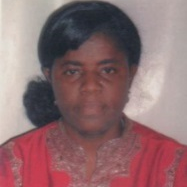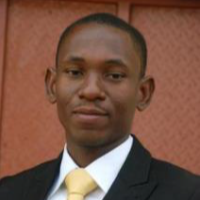International Journal of Information Engineering and Electronic Business (IJIEEB)
IJIEEB Vol. 10, No. 6, 8 Nov. 2018
Cover page and Table of Contents: PDF (size: 788KB)
Author(s)
Index Terms
Boosters, Repeaters, Cellular Signal Degradation, Weak Signal Reception, Cellular Generations
Abstract
The development of wireless technology has facilitated the wide deployment of mobile communication systems. The beauty of wireless communication is that all nooks and corners can be reached at a cheaper and faster rate when compared with wireline. Wireless is now dominating the telecommunications market. Initially, the dawn of wireless was seen as the dawn of communications to poor countries and rural areas which were poorly covered by wireline devices due to high cost. Currently, the story has changed. Both the wired and unwired environments are clamoring for wireless connectivity. Considering the hype of R&D in broadband technologies and easy acceptance in the market place, wireline communications may soon die a natural death. However, wireless communications faces a few challenges. One of them is that the radio frequency (RF) carrier signals used in these communication systems degrades as it travels through the air interface due to attenuation and interference. As a result, the range of coverage may not be as planned leading to very weak reception or even dead zones where no communication can be done. This problem has resulted in the development of cellular signal boosters that help in receiving the weak signal, amplifying and then re-transmitting it to reach the uncovered areas. Boosters are now giving hope to the frustrated wireless users such as indoor users and those at the fringes of a cell site. These boosters are diverse in make, range, method of operation, deployment and cost. In this paper, a survey of various signal booster designs, deployment and performance is presented. It is hoped that this will serve as a one-stop shop for researchers and developers in the important field of wireless signal boosters and extenders, who wish to know what is available and existing challenges.
Cite This Paper
Elizabeth N. Onwuka, Michael Okwori, Salihu O. Aliyu, Stephen S. Oyewobi, Caroline O. Alenoghena, Habeeb Bello-Salau, Sani S. Makusidi, Victor Asuquo, "Survey of Cellular Signal Booster", International Journal of Information Engineering and Electronic Business(IJIEEB), Vol.10, No.6, pp. 21-31, 2018. DOI:10.5815/ijieeb.2018.06.03
Reference
[1]C. Azubuike and O. Obiefuna, “Wireless Communication: The Impact of GSM on the Economic Lives of the Nigerian Rural Users,” Journal of Educational and Social Research, vol. 4, no. 7, pp. 79–87, November 2014. [Online]. Available: http://mcser.org/journal/index.php/jesr/article/view/5301
[2]G. Liu, F. R. Yu, H. Ji, V. C. M. Leung, and X. Li, “In-Band Full-Duplex Relaying: A Survey, Research Issues and Challenges,” IEEE Communications Surveys & Tutorials, vol. 17, no. 2, pp. 500–524, 2015.
[3]D. R. Morgan and Z. Ma, “A same-frequency cellular repeater using adaptive feedback cancellation,” GLOBECOM - IEEE Global Telecommunications Conference, pp. 3825–3830, 2012.
[4]Y. S. Cho, J. Kim, W. Y. Yang, and C. G. Kang, MIMO-OFDM Wireless Communications with MATLAB. Wiley Publishing, 2010.
[5]A. H. Ali, “Coverage enhancement through fixed repeater network in UMTS,” 2006 International RF and Microwave Conference, (RFM) Proceedings, pp. 407–410, 2006.
[6]M. N. Patwary, P. Rapajic, and I. Oppermann, Dynamic QoS Guarantee with Repeater in Power Controlled WCDMA Urban Environment. Boston, MA: Springer US, 2003, pp. 141–148.
[7]L. Zhang, W. Hong, J. Wang, and J. Zhou, “Low cost solution to enhance performance of CDMA repeater amplifier,” Asia-Pacific Microwave Conference Proceedings, APMC, vol. 5, pp. 3–5, 2005.
[8]S. S. Shankari and A. G. Gowtham, “Signal Strength Enhancer,” International Journal of Industrial Electronics and Electrical Engineering, vol. 2, no. 2, pp. 16–18, 2014.
[9]Y. Xue, “Amplify-and-forward repeater enhanced random access in single-cell wireless communications,” IEEE International Symposium on Personal, Indoor and Mobile Radio Communications, PIMRC, pp. 7–11, 2008.
[10]Z. Zhang, K. Long, A. V. Vasilakos, and L. Hanzo, “Full-Duplex Wireless Communications: Challenges, Solutions, and Future Research Directions,” Proceedings of the IEEE, vol. 104, no. 7, pp. 1369–1409, Jul 2016.
[11]A. S. M. Marzuki, A. R. Rahim, B. Mohmd, K. Khalil, A. Naemat, and A. Tee, “Antenna Isolation Considerations in WCDMA Repeater Deployment,” in 2006 International RF and Microwave Conference. IEEE, Sep 2006, pp. 347–350.
[12]Z. Wei, X. Zhu, S. Sun, Y. Huang, A. Al-Tahmeesschi, and Y. Jiang, “Energy-Efficiency of Millimeter-Wave Full-Duplex Relaying Systems: Challenges and Solutions,” IEEE Access, vol. 4, pp. 4848–4860, 2016.
[13]A. B. Saleh, S. Redana, B. Raaf, T. Riihonen, J. Hämäläinen, and R. Wichman, “Performance of amplify-and-forward and decode-and-forward relays in LTE-advanced,” IEEE Vehicular Technology Conference, pp. 1–5, 2009.
[14]O. M. Longe, “Effect of signal strength on handover in GSM networks in Owo, Ondo State, Nigeria,” in 3rd IEEE International Conference on Adaptive Science and Technology (ICAST 2011), no. ICAST. IEEE, Nov 2011, pp. 138–143. [Online]. Available: http://ieeexplore.ieee.org/document/6145166/
[15]M. Kashanianfard and K. Sarabandi, “Directional Full-Duplex RF Booster for 2450 MHz ISM Band,” IEEE Transactions on Antennas and Propagation, vol. 65, no. 1, pp. 134–141, Jan 2017.
[16]M. M. Wang, “Dynamic Gain Management for On-Channel Repeaters,” IEEE Transactions on Broadcasting, vol. 59, no. 4, pp. 685–692, Dec 2013.
[17]P. M. Cabral, D. P. Ferreira, N. B. Carvalho, and J. C. Pedro, “A Repeater Prototype for the UMTS Network Radio Sub-System.”
[18]M. Garcia-Lozano, L. Alonso, F. Casadevall, and S. Ruiz, “Capacity and coverage tradeoff in WCDMA environments with repeaters deployment,” Wireless Personal Communications, vol. 40, no. 3, pp. 329–342, 2007.
[19]C. T. Lin, F. S. Tseng, W. R. Wu, and F. J. Jheng, “Joint precoders design for full-duplex MIMO relay systems with QR-SIC detector,” 2015 IEEE Global Communications Conference, GLOBECOM 2015, 2016.
[20]N. Madhusudhanan and L. Nithyanandan, “Compress-and-forward relaying with polar codes for LTE-A system,” in 2014 International Conference on Communication and Signal Processing. IEEE, Apr 2014, pp. 798–802.
[21]M. Choi, H. Nam, and H. Lee, “Asymptotic error rate approximation of amplify-and-forward cooperative diversity network with relay selection,” in 2015 International Conference on Information and Communication Technology Convergence (ICTC). IEEE, Oct 2015, pp. 1336–1341.
[22]Y. Tan, Y. Sun, and D. Lauder, “Automatic impedance matching and antenna tuning using quantum genetic algorithms for wireless and mobile communications,” IET Microwaves, Antennas Propagation, vol. 7, no. 8, pp. 693–700, 2013.
[23]A. League, The ARRL Antenna, 2007.
[24]R. Jakubowski, “A new generation of high-power cellular repeaters,” in 40th IEEE Conference on Vehicular Technology. IEEE, 1990, pp. 24–28.
[25]T. Isotalo, P. Lhdekorpi, and J. Lempiinen, “Improving HSDPA indoor coverage and throughput by repeater and dedicated indoor system,” Eurasip Journal on Wireless Communications and Networking, vol.2008, 2008.
[26]F. Adelantado, O. Salient, and J. Pérez-Romero, “On deploying repeaters in CDMA systems for traffic hot-spots: An analytical characterization,” IEEE International Symposium on Personal, Indoor and Mobile Radio Communications, PIMRC, 2006.
[27]M. Garcia-Lozano, L. Alonso, F. Casadevall, S. Ruiz, and L. Correia, “On the Impact of Repeaters Deployment on WCDMA, Networks Planning,” 2006 IEEE 63rd Vehicular Technology Conference (VTC 2006), vol. 00, no. c, pp. 466–470, 2006.
[28]D. Rodrigo, E. Diaz, and L. Jofre, “Reconfigurable Pixel-Layer Isolator for Frequency-Tunable On-Frequency Repeaters,” IEEE Antennas and Wireless Propagation Letters, vol. 13, pp. 475–478, 2014.
[29]M. Bavafa and H. Xia, “Repeaters for CDMA systems,” in VTC ’98. 48th IEEE Vehicular Technology Conference. Pathway to Global Wireless Revolution (Cat. No.98CH36151), vol. 2. IEEE, 1998, pp. 1161–1165.
[30]N. C. Commision, “Illegal Usage of GSM Boosters,” 2016. [Online]. Available: http://www.ncc.gov.ng/statkeholder/media-public/public-notices/83-illegal-usage-of-gsm-boosters
[31]ETSI, “ETSI EN 300 609-4,” 2000. [Online]. Available: http://www.etsi.org/deliver/etsi_en/300600_300699/30060904/08.00.02_60/en_30060904v080002p.pdf
[32]J. Oh, M. Thiel, and K. Sarabandi, “Wave-propagation management in indoor environments using micro-radio-repeater systems,” IEEE Antennas and Propagation Magazine, vol. 56, no. 2, pp. 76–88, 2014.
[33]S. K. Sharma, M. Patwary, S. Chatzinotas, B. Ottersten, and M. Abdel-Maguid, “Repeater for 5G wireless: A complementary contender for Spectrum Sensing intelligence,” IEEE International Conference on Communications, vol. 2015-Septe, pp. 1416–1421, 2015.
[34]X. Xu, X. Chen, M. Zhao, S. ZHOU, C. Y. Chi, and J. Wang, “Power-Efficient Distributed Beamforming for Full-Duplex MIMO Relaying Networks,” IEEE Transactions on Vehicular Technology, vol. PP, no. 99, p. 1, 2016.
[35]W. Lijie, Z. Haitao, Xiyong, and W. Jibo, “Optimizing the performance of OFDM-based cooperative networks by relay selection, power allocation and relay localization,” 2010 IEEE International Conference on Ultra-Wideband, ICUWB2010 - Proceedings, vol. 2, pp. 686–689, 2010.
[36]R. N. Braithwaite, S. Carichner, and M. Cope, “Echo cancellation for a wide bandwidth mixed-mode WCDMA/GSM repeater with digital sub-band filtering,” IEEE Vehicular Technology Conference, no. 4, pp. 1–5, 2009.
[37]D. R. Morgan, M. G. Zierdt, D. A. Gudovskiy, J. Z. Pastalan, and Z. Ma, “FPGA implementation of a same-frequency cellular repeater using adaptive feedback cancellation,” ICASSP, IEEE International Conference on Acoustics, Speech and Signal Processing - Proceedings, pp. 4728–4730, 2013.
[38]Sang-Jin Park, Whan Woo Kim, and Bum Kwon, “An analysis of effect of wireless network by a repeater in CDMA system,” in IEEE VTS 53rd Vehicular Technology Conference, Spring 2001. Proceedings (Cat. No.01CH37202), vol. 4. IEEE, 2001, pp. 2781–2785. [Online]. Available: http://ieeexplore.ieee.org/document/944107/8
[39]A. S. Mohd Marzuki, S. Selamat, A. T. Md Azlan Tee, A. R. Abdul Rahim, K. Khalil, and A. Naemat, “CDMA450 indoor coverage enhancement,” 2011 IEEE International RF and Microwave Conference, RFM 2011 - Proceedings, no. December, pp. 107–110, 2011.
[40]M. Vincent, K. V. Babu, M. Arthi, and P. Arulmozhivarman, “A Novel Fuzzy Logic Based Relay Station Selection Scheme for 4G Cellular System,” pp. 158–163, 2016.
[41]Y. Albagory, F. A. Raddady, High-Altitude Platforms Cellular System for Sparsely Populated Areas, I.J. Computer Network and Information Security, MECS Publishers, vol. 4, pp13-20 2014.





